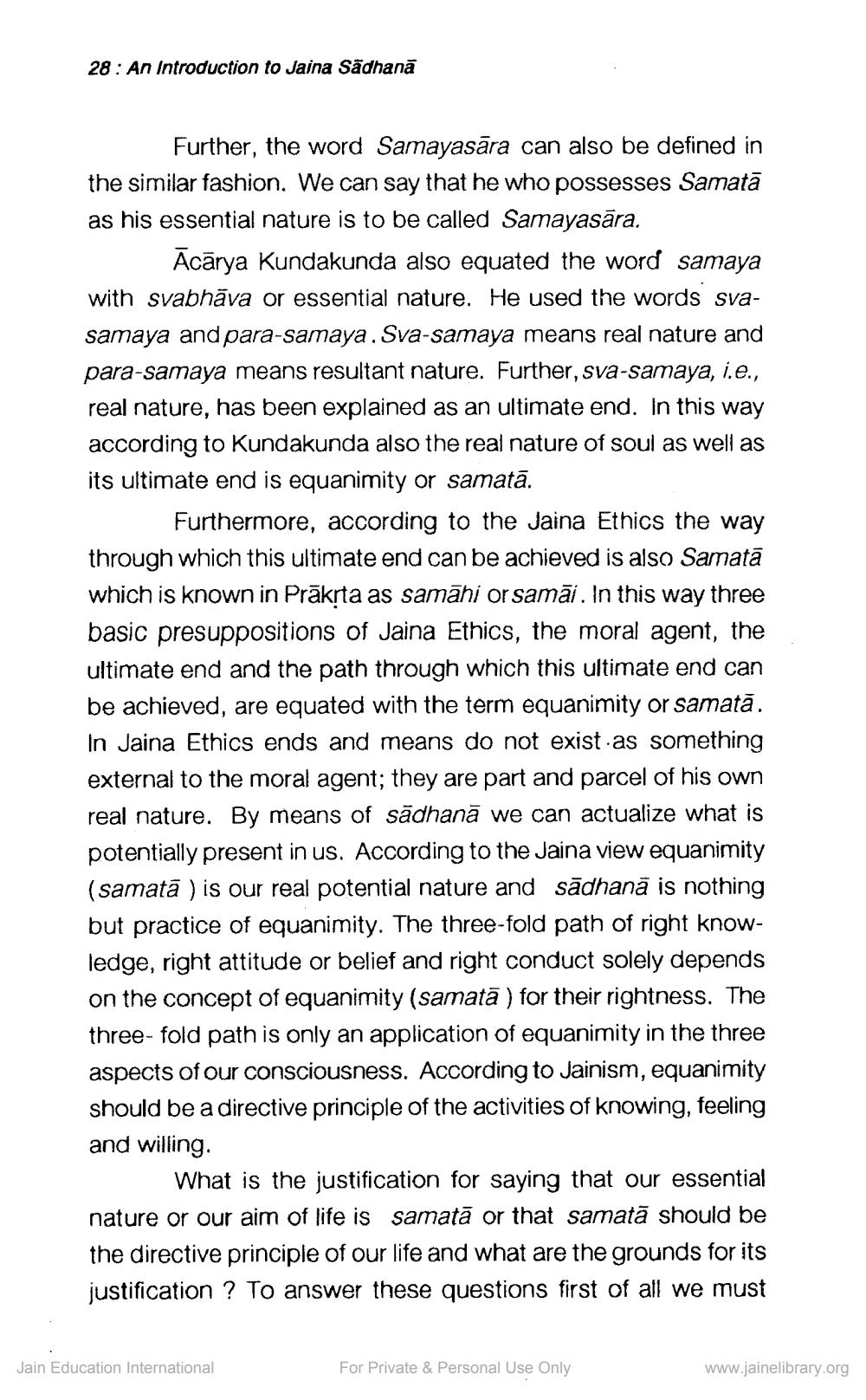________________
28 : An Introduction to Jaina Sadhanā
Further, the word Samayasāra can also be defined in the similar fashion. We can say that he who possesses Samatā as his essential nature is to be called Samayasāra.
Ācārya Kundakunda also equated the word samaya with svabhāva or essential nature. He used the words svasamaya and para-samaya. Sva-samaya means real nature and para-samaya means resultant nature. Further, sva-samaya, i.e., real nature, has been explained as an ultimate end. In this way according to Kundakunda also the real nature of soul as well as its ultimate end is equanimity or samatā.
Furthermore, according to the Jaina Ethics the way through which this ultimate end can be achieved is also Samatā which is known in Prākrta as samāhi or samāi . In this way three basic presuppositions of Jaina Ethics, the moral agent, the ultimate end and the path through which this ultimate end can be achieved, are equated with the term equanimity or samatā. In Jaina Ethics ends and means do not exist as something external to the moral agent; they are part and parcel of his own real nature. By means of sādhanā we can actualize what is potentially present in us. According to the Jaina view equanimity (samatā ) is our real potential nature and sādhanā is nothing but practice of equanimity. The three-fold path of right knowledge, right attitude or belief and right conduct solely depends on the concept of equanimity (samatā ) for their rightness. The three-fold path is only an application of equanimity in the three aspects of our consciousness. According to Jainism, equanimity should be a directive principle of the activities of knowing, feeling and willing.
What is the justification for saying that our essential nature or our aim of life is samatā or that samatā should be the directive principle of our life and what are the grounds for its justification ? To answer these questions first of all we must
Jain Education International
For Private & Personal Use Only
www.jainelibrary.org




